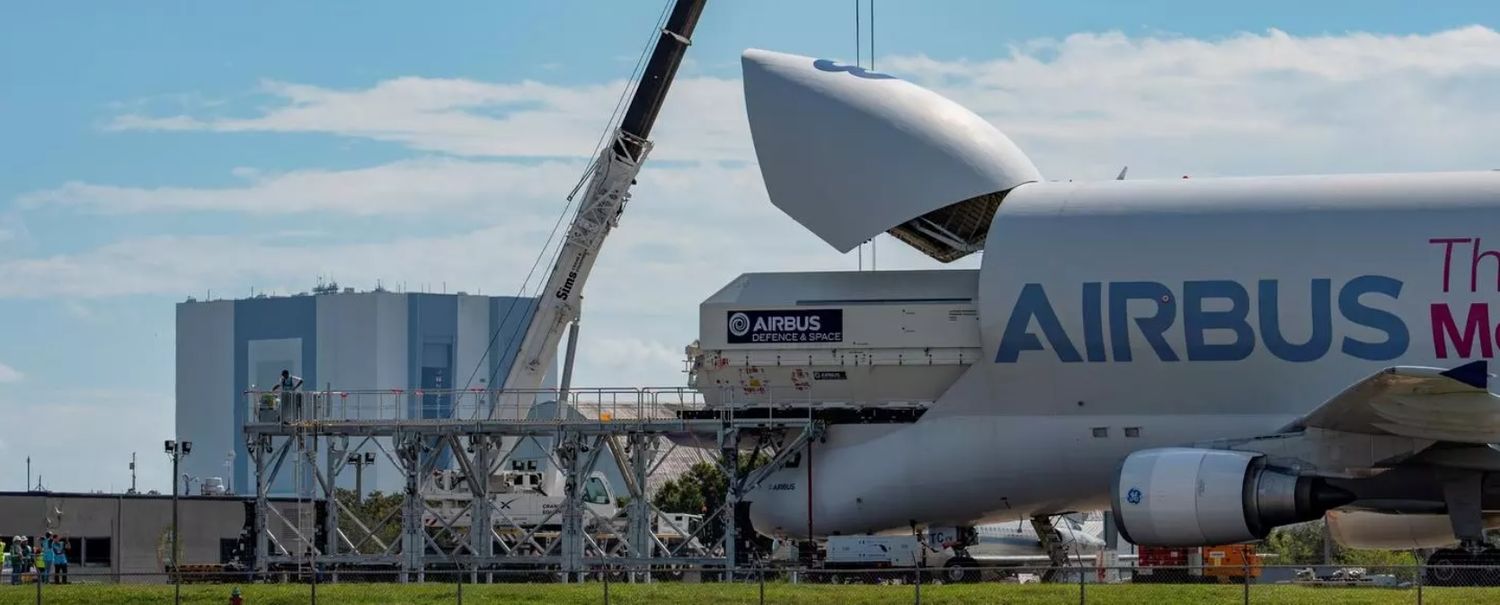Last weekend, the Airbus A300-600ST, better known as «Beluga», landed at the Kennedy Space Center in Cape Canaveral, Florida. The aircraft carried the Hotbird 13G satellite, the second one produced by the European manufacturer for the French telecommunications company Eutelsat.
Just a few hours earlier, Hotbird 13F, a sister craft, was successfully launched aboard the Falcon 9, developed by SpaceX. Airbus expects the second satellite to join the first in orbit within a month.
Both spacecraft are the first members of the new Eurostar Neo family of telecommunications satellites developed by Airbus. They are based on a new generation platform and technologies implemented with the support of the European Space Agency (ESA) and other entities, such as France’s Centre National d’Etudes Spatiales (CNES) and the United Kingdom Space Agency (UKSA).
According to the manufacturer, the two satellites will be much more powerful than their predecessors and will be able to transmit more than a thousand television signals across Europe, the Middle East and North Africa. They will replace Eutelsat’s three satellites currently in orbit and enable the company to provide connectivity to more than 135 million people.
The operation also marked the return of the «Beluga» to the United States for the first time since 2009. On that occasion, it had transported the European module Tranquility, which later joined the International Space Station.
«It is a true honour to consecutively showcase two satellites for our customer Eutelsat, two pieces of European technology at the iconic Kennedy Space Center», said Jean-Marc Nasr, Head of Space Systems at Airbus. «The ability of Airbus to field an autonomous European solution is underscored by the transportation of our satellites in the unique Beluga aircraft», he added.

The Beluga
«Beluga» is a model developed from the Airbus A300-600. The original airframe was modified to achieve a larger fuselage size and cargo capacity. Only five were produced. The main purpose of the modification was to have its own large cargo-carrying aircraft, to be able to transport elements such as the A320 fuselages or the A380 wings, among the Airbus production units in Europe.
The manufacturer points out that the aircraft can carry any cargo up to 7.1 metres high and 6.7 metres wide, without requiring any additional retrofitting. It has a maximum payload capacity of up to 40 tonnes.
In January this year, the company launched its cargo division, Airbus Beluga Transport, which has its own Air Operator Certificate (AOC) and staff. In this way, the company moved away from using the A300-600STs exclusively for the transport of parts for its future aircraft and entered the market of oversized cargo.



Comentarios
Para comentar, debés estar registrado
Por favor, iniciá sesión